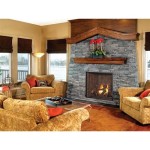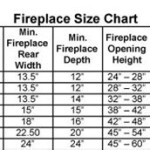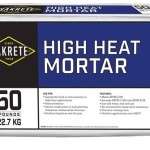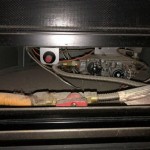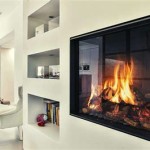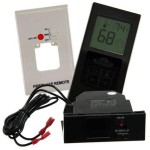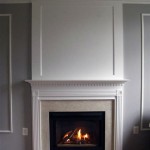How to Paint a Fireplace Cover
A fireplace cover, whether it is made of metal, wood, or another material, can become a dated or unsightly feature in a home. Rather than replacing it, painting the fireplace cover presents a cost-effective and transformative solution to update the aesthetics of a living space. A successful paint job relies on proper preparation and the selection of appropriate materials. This article outlines a detailed process for painting a fireplace cover, ensuring a durable and visually appealing finish.
1. Preparation: Setting the Stage for Success
The preparation phase is arguably the most crucial step in achieving a professional-looking painted fireplace cover. This stage involves cleaning, sanding, and priming, all of which contribute to optimal paint adhesion and a smooth surface.
Before commencing any work, proper safety measures must be implemented. This includes wearing appropriate personal protective equipment (PPE), such as safety glasses, a dust mask, and gloves. These items will protect against dust, debris, and potentially harmful chemicals present in cleaning agents and paints.
The first step is to remove the fireplace cover from the fireplace opening. This provides unobstructed access to all surfaces and avoids the risk of getting paint on the surrounding fireplace surround or floor. If the cover is particularly heavy or cumbersome, assistance from another person may be required to prevent damage or injury.
Once the cover is removed, thoroughly clean it to eliminate any dirt, dust, soot, grease, or other contaminants. The specific cleaning method will depend on the material of the cover. A metal cover can be cleaned with a mixture of dish soap and water, followed by a thorough rinse. For stubborn grease or soot, a degreasing cleaner specifically designed for metal may be necessary. Wood covers can be cleaned with a mild wood cleaner and a soft cloth, being careful not to saturate the wood.
After cleaning, allow the fireplace cover to dry completely. Any moisture present on the surface can interfere with paint adhesion and lead to peeling or blistering.
The next step is sanding. Sanding creates a slightly rough surface that allows the primer and paint to adhere more effectively. The appropriate grit of sandpaper will depend on the existing finish and the material of the cover. For metal covers with a glossy finish, a medium-grit sandpaper (around 120-180 grit) is typically suitable. For wood covers, a finer grit sandpaper (around 220 grit) may be sufficient. Use a sanding block or an orbital sander to ensure even sanding and prevent scratching the surface. Sand in the direction of the grain for wood covers.
Following sanding, remove all sanding dust with a tack cloth or a damp cloth. Thorough dust removal is essential for a smooth and even paint finish. Vacuuming the surrounding area can also help to minimize dust contamination during the painting process.
Finally, apply a primer. Primer serves several important functions: it seals the surface, provides a uniform base for the paint, and enhances paint adhesion. Choose a primer that is compatible with the material of the fireplace cover and the type of paint being used. For metal covers, a rust-inhibiting primer is recommended. For wood covers, a stain-blocking primer can prevent tannins from bleeding through the paint. Apply the primer in thin, even coats using a brush, roller, or spray gun, following the manufacturer's instructions. Allow the primer to dry completely before proceeding to the next step.
2. Painting: Applying the Decorative Finish
With the preparation complete, the painting phase can begin. The selection of the appropriate paint is critical for achieving the desired aesthetic and ensuring the durability of the finish. Factors to consider include the material of the fireplace cover, the desired sheen level (matte, satin, semi-gloss, or gloss), and the heat resistance of the paint.
For metal fireplace covers, a high-heat enamel paint is generally recommended, especially if the cover will be exposed to direct heat from the fireplace. These paints are designed to withstand high temperatures without blistering, cracking, or discoloring. For wood or other non-metal covers that will not be exposed to direct heat, a standard latex or acrylic paint can be used.
Before applying the paint, stir it thoroughly to ensure that the pigments are evenly distributed. This will help to prevent streaking and ensure a consistent color throughout the finish.
Apply the paint in thin, even coats using a brush, roller, or spray gun. Multiple thin coats are preferable to a single thick coat, as they are less likely to drip or sag and will provide a more durable finish. Allow each coat to dry completely before applying the next coat, following the manufacturer's recommended drying time.
When using a brush, choose a high-quality brush with synthetic bristles for latex or acrylic paints and natural bristles for oil-based paints. Apply the paint in smooth, even strokes, overlapping each stroke slightly to avoid leaving any gaps. Work in small sections at a time to maintain control and prevent the paint from drying prematurely.
When using a roller, choose a roller cover with a nap length appropriate for the surface texture. A shorter nap is suitable for smooth surfaces, while a longer nap is better for textured surfaces. Apply the paint in a "W" or "N" pattern, then fill in the pattern with smooth, even strokes. Avoid pressing too hard on the roller, as this can cause paint to squeeze out and create uneven coverage.
When using a spray gun, thin the paint according to the manufacturer's instructions. This will help to prevent clogging and ensure a smooth, even spray pattern. Hold the spray gun at a consistent distance from the surface and move it in smooth, even strokes, overlapping each stroke slightly. Work in a well-ventilated area and wear a respirator to protect against paint fumes.
After applying each coat of paint, inspect the surface for any imperfections, such as drips, runs, or brushstrokes. These can be corrected by sanding the affected area lightly and applying another thin coat of paint. Allow the final coat of paint to dry completely before handling the fireplace cover.
3. Finishing Touches & Reinstallation
Once the paint has fully cured, a process that can take several days depending on the type of paint used, the fireplace cover can be inspected for any final imperfections. Minor imperfections, such as dust particles or small bumps, can be carefully removed with fine-grit sandpaper (400-grit or higher) followed by a light buffing with a soft cloth.
Consider applying a clear coat of sealant or varnish to protect the painted finish, especially if the fireplace cover is made of wood or if it will be exposed to high heat. A sealant will help to protect the paint from scratches, fading, and moisture damage. Choose a sealant that is compatible with the type of paint used and follow the manufacturer's instructions for application. Apply the sealant in thin, even coats, allowing each coat to dry completely before applying the next.
Before reinstalling the fireplace cover, thoroughly clean the fireplace opening to remove any dust, debris, or old ash. This will prevent these contaminants from sticking to the freshly painted surface.
Carefully reinstall the fireplace cover, ensuring that it is properly aligned and securely fastened. If necessary, use new screws or other fasteners to ensure a tight and secure fit. If the cover was originally attached with any special hardware, such as latches or hinges, make sure that these are properly lubricated and functioning smoothly.
After reinstalling the fireplace cover, inspect the surrounding area for any paint splatters or smudges. Clean these up immediately with a damp cloth and a mild cleaner. Allow the fireplace cover to sit undisturbed for at least 24 hours before lighting a fire in the fireplace. This will allow the paint to fully cure and prevent any premature damage to the finish.
The painted fireplace cover should enhance the aesthetic of the fireplace and improve the overall appearance of the room. Regularly cleaning the cover with a soft cloth and a mild cleaner will help to maintain its condition and prolong its lifespan. Avoid using harsh chemicals or abrasive cleaners, as these can damage the painted finish.
By following these steps, individuals can transform a dated or unattractive fireplace cover into a visually appealing feature that complements their home's décor. The key to a successful project lies in thorough preparation, the selection of appropriate materials, and careful execution. The result is a durable, aesthetically pleasing update that can enhance the ambiance of the room.

Fireplace Door Update With Spray Paint Roots Wings Furniture Llc

How To Paint A Brass Fireplace Screen Addicted 2 Decorating

Fireplace Door Update With Spray Paint Roots Wings Furniture Llc

How To Spray Paint A Brass Fireplace Insert Erfly House

Painted Fireplace Doors 6 Steps With S Instructables

How To Spray Paint The Fireplace Surround My Homier Home

How To Paint Metal Fireplace Surround Four Generations One Roof

How To Spray Paint A Brass Fireplace Insert Erfly House

How To Paint Your Fireplace Brick Surround

How To Spray Paint The Fireplace Surround My Homier Home

